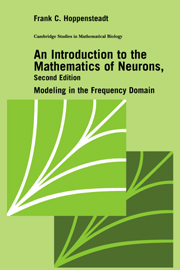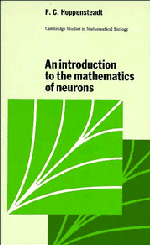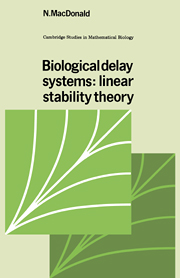An Introduction to the Mathematics of Neurons
This book describes signal processing aspects of neural networks, how we receive and assess information. Beginning with a presentation of the necessary background material in electronic circuits, mathematical modeling and analysis, signal processing, and neurosciences, it proceeds to applications. These applications include small networks of neurons, such as those used in control of warm-up and flight in moths and control of respiration during exercise in humans. Next, Hoppensteadt develops a theory of mnemonic surfaces and presents material on pattern formation and cellular automata. Finally, the text addresses the large networks, such as the thalamus-reticular complex circuit, that may be involved in focusing attention, and the development of connections in the visual cortex. This book will serve as an excellent text for advanced undergraduates and graduates in the physical sciences, mathematics, engineering, medicine and life sciences.
- Bifurcation analysis of neural networks
- Analysis of neural networks in the frequency domain
- Modelling and simulation of large brain structures
Reviews & endorsements
"The author undoubtedly has a strong and thorough knowledge of both mathematics and neurosciences which allows him to put the reader on what he calls 'the launching point'...an excellent door that opens the researcher to further exploration of the mysteries of the brain. I conclude this review by repeating what is at the end of this very well written book: 'Mathematics is needed to understand how the brain works.'" Catherine Garcia-Reimbert
"...a brief and nice introduction to the mathematical methods and models used in the theory of neural networks and their applications." Monatshefte fur Mathematik
Product details
June 1997Paperback
9780521599290
232 pages
229 × 153 × 15 mm
0.315kg
69 b/w illus. 1 table
Available
Table of Contents
- Preface
- 1. Some useful electrical circuits
- 2. A theory of simple clocks
- 3. Some mathematical models of neurons
- 4. Signal processing in phase-locked systems
- 5. Small physiological control networks
- 6. Memory, phase change, and synchronization
- 7. Attention and other brain phenomena
- Appendices
- References
- Index.










